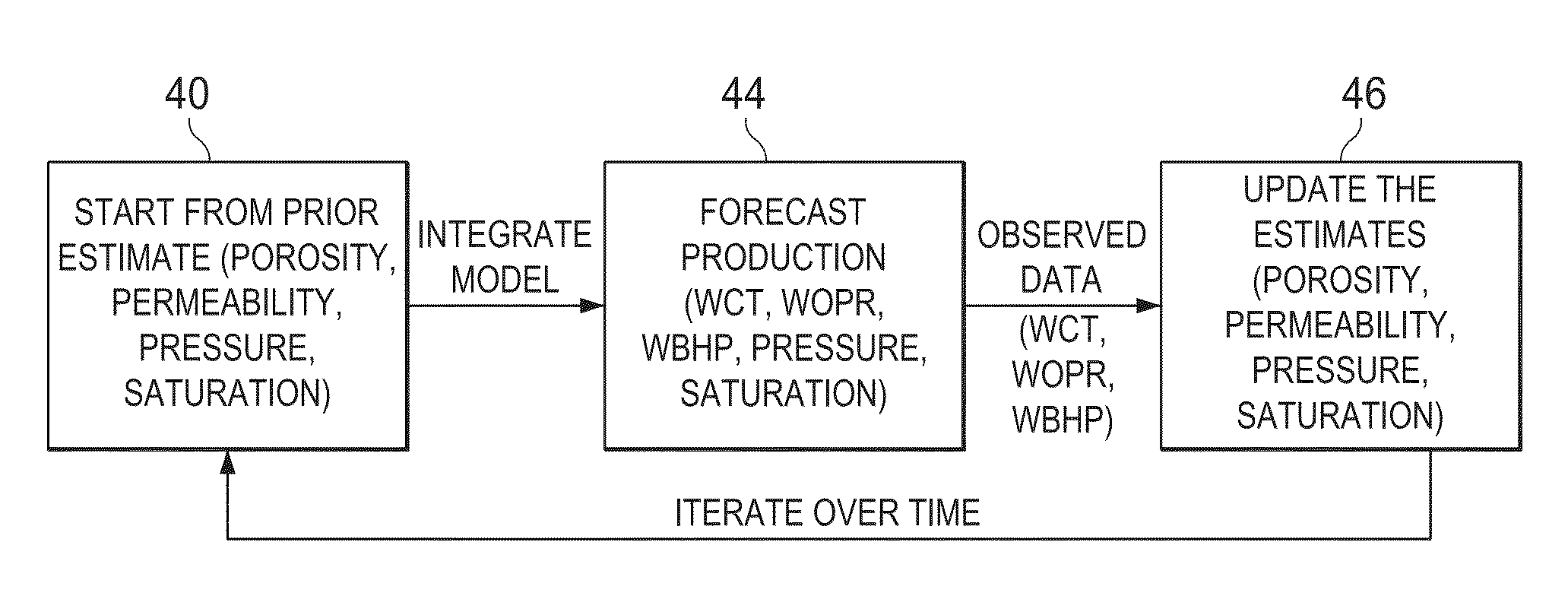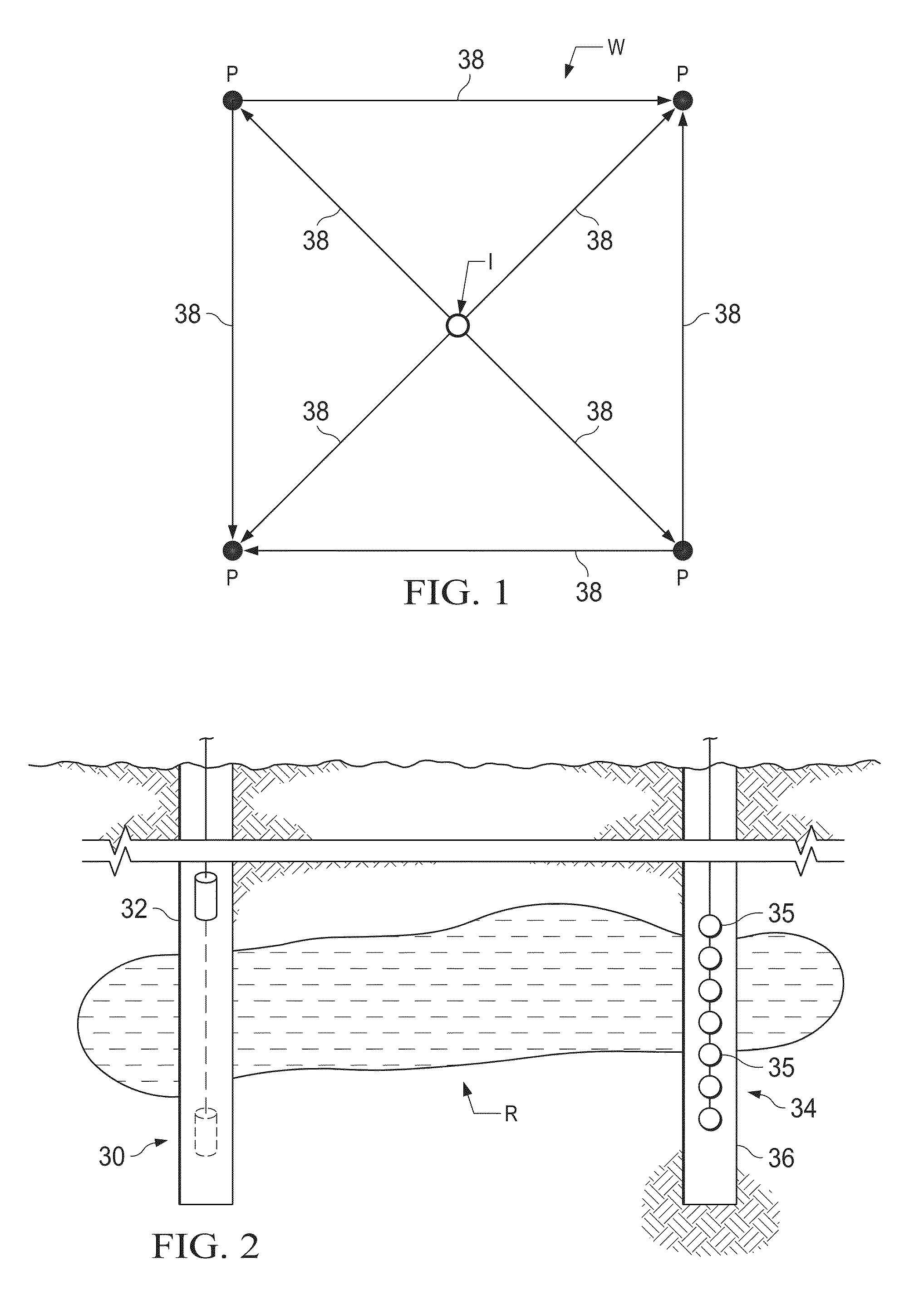History matching of time-lapse crosswell data using ensemble kalman filtering
a crosswell data and ensemble filtering technology, applied in the field of historical matching in petroleum reservoir simulations, can solve the problems of significant risk of sub-optimal performance, difficult and expensive to generate consistent models to accurately represent oil fields, and difficulty in achieving accurate representation of oil fields
- Summary
- Abstract
- Description
- Claims
- Application Information
AI Technical Summary
Benefits of technology
Problems solved by technology
Method used
Image
Examples
Embodiment Construction
Crosswell Seismic Surveying
[0058]With the present invention, it has been found that crosswell seismic data can be used as a source of time-lapse information for processing according to the present invention to provide information for reservoir analysts and engineers regarding fluid displacement within a reservoir. The crosswell seismic data is also more reproducible than current techniques (4D seismic), requires less time to be acquired and has lower data acquisition costs when compared to 4D seismic.
[0059]FIG. 1 indicates schematically a map of the relative locations of a group of wells W, including an injector well I and four producer wells P involved in the production of oil from a subsurface reservoir R (FIG. 2). During a crosswell seismic survey, a seismic source line 30 is lowered by wireline in a borehole 32 of one of the wells W to a selected depth or depths of interest relating to the reservoir R. A receiver array 34 of receivers or geophones 35 is also lowered in a borehol...
PUM
 Login to View More
Login to View More Abstract
Description
Claims
Application Information
 Login to View More
Login to View More - R&D
- Intellectual Property
- Life Sciences
- Materials
- Tech Scout
- Unparalleled Data Quality
- Higher Quality Content
- 60% Fewer Hallucinations
Browse by: Latest US Patents, China's latest patents, Technical Efficacy Thesaurus, Application Domain, Technology Topic, Popular Technical Reports.
© 2025 PatSnap. All rights reserved.Legal|Privacy policy|Modern Slavery Act Transparency Statement|Sitemap|About US| Contact US: help@patsnap.com



